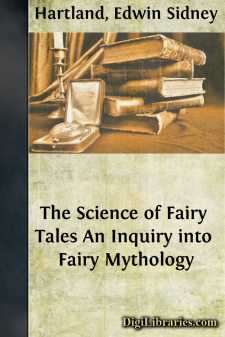Categories
- Antiques & Collectibles 13
- Architecture 36
- Art 48
- Bibles 22
- Biography & Autobiography 813
- Body, Mind & Spirit 142
- Business & Economics 28
- Children's Books 15
- Children's Fiction 12
- Computers 4
- Cooking 94
- Crafts & Hobbies 4
- Drama 346
- Education 46
- Family & Relationships 57
- Fiction 11829
- Games 19
- Gardening 17
- Health & Fitness 34
- History 1377
- House & Home 1
- Humor 147
- Juvenile Fiction 1873
- Juvenile Nonfiction 202
- Language Arts & Disciplines 88
- Law 16
- Literary Collections 686
- Literary Criticism 179
- Mathematics 13
- Medical 41
- Music 40
- Nature 179
- Non-Classifiable 1768
- Performing Arts 7
- Periodicals 1453
- Philosophy 64
- Photography 2
- Poetry 896
- Political Science 203
- Psychology 42
- Reference 154
- Religion 513
- Science 126
- Self-Help 84
- Social Science 81
- Sports & Recreation 34
- Study Aids 3
- Technology & Engineering 59
- Transportation 23
- Travel 463
- True Crime 29
The Science of Fairy Tales An Inquiry into Fairy Mythology
Categories:
Description:
Excerpt
CHAPTER I.
THE ART OF STORY-TELLING.
The art of story-telling — Unity of human imagination — Definition of Fairy Tales — Variable value of Tradition — Story-telling and the story-teller among various peoples — The connection of folk-tales with folk-songs — Continuity of Tradition — Need of accuracy and good faith in reporting stories.
The art of story-telling has been cultivated in all ages and among all nations of which we have any record; it is the outcome of an instinct implanted universally in the human mind. By means of a story the savage philosopher accounts for his own existence and that of all the phenomena which surround him. With a story the mothers of the wildest tribes awe their little ones into silence, or rouse them into delight. And the weary hunters beguile the long silence of a desert night with the mirth and wonders of a tale. The imagination is not less fruitful in the higher races; and, passing through forms sometimes more, sometimes less, serious, the art of story-telling unites with the kindred arts of dance and song to form the epic or the drama, or develops under the complex influences of modern life into the prose romance and the novel. These in their various ways are its ultimate expression; and the loftiest genius has found no fitter vehicle to convey its lessons of truth and beauty.
But even in the most refined products of the imagination the same substances are found which compose the rudest. Something has, of course, been dropped in the process; and where we can examine the process stage by stage, we can discern the point whereat each successive portion has been purged away. But much has also been gained. To change the figure, it is like the continuous development of living things, amorphous at first, by and by shooting out into monstrous growths, unwieldy and half-organized, anon settling into compact and beautiful shapes of subtlest power and most divine suggestion. But the last state contains nothing more than was either obvious or latent in the first. Man's imagination, like every other known power, works by fixed laws, the existence and operation of which it is possible to trace; and it works upon the same material,—the external universe, the mental and moral constitution of man and his social relations. Hence, diverse as may seem at first sight the results among the cultured Europeans and the debased Hottentots, the philosophical Hindoos and the Red Indians of the Far West, they present, on a close examination, features absolutely identical. The outlines of a story-plot among savage races are wilder and more unconfined; they are often a vast unhidebound corpse, but one that bears no distant resemblance to forms we think more reasonable only because we find it difficult to let ourselves down to the level of savage ignorance, and to lay aside the data of thought which have been won for us by the painful efforts of civilization. The incidents, making all due allowance for these differences and those of climate and physical surroundings, are not merely alike; they are often indistinguishable. It cannot, of course, be expected that the characters of the actors in these stories will be drawn with skill, or indeed that any attention will be paid to them. Character-study is a late development. True: we ought not to overlook the fact that we have to do with barbarous ideals. In a rudimentary state of civilization the passions, like the arts, are distinguished not by subtlety and complexity, but by simplicity and violence of contrast. This may account to some extent for what seems to us repulsive, inconsistent or impossible. But we must above all things beware of crediting the story-teller with that degree of conscious art which is only possible in an advanced culture and under literary influences. Indeed, the researches which are constantly extending the history of human civilization into a remoter and remoter past, go everywhere to show that story-telling is an inevitable and wholly unconscious growth, probably arising, as we shall see in the next , out of narratives believed to record actual events.
I need not stop now to illustrate this position, which is no new one, and the main lines of which I hope will be rendered apparent in the course of this volume....


